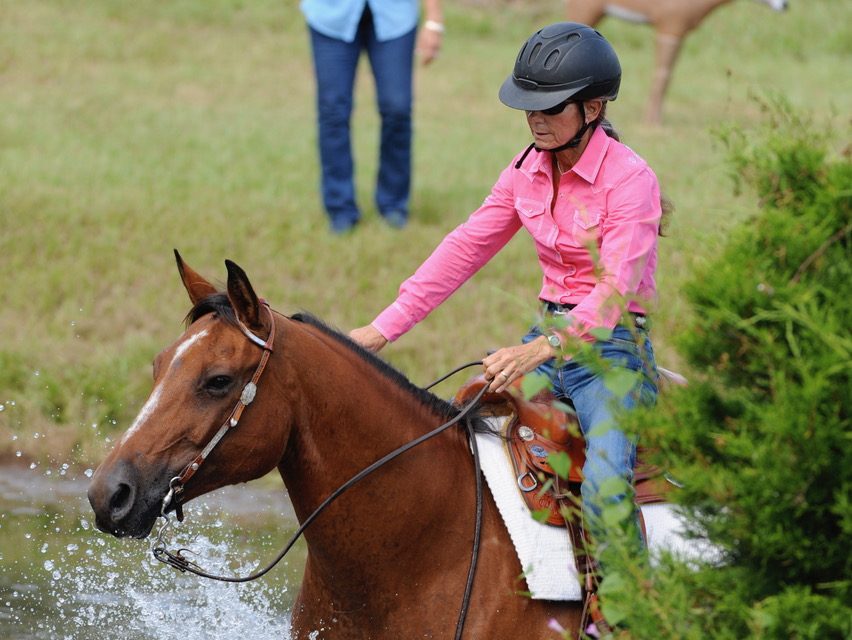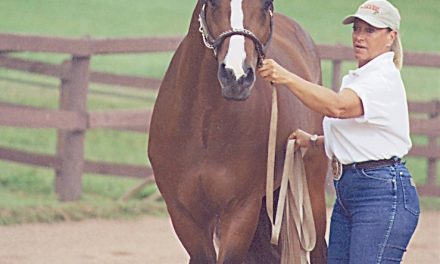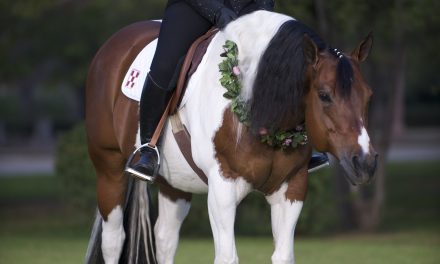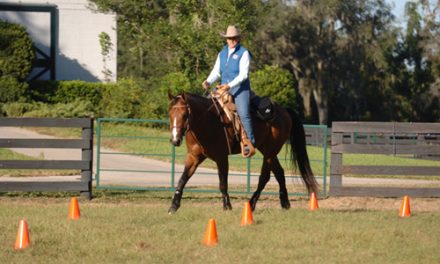Palm Partnership Training™
Building a Partnership with your Horse
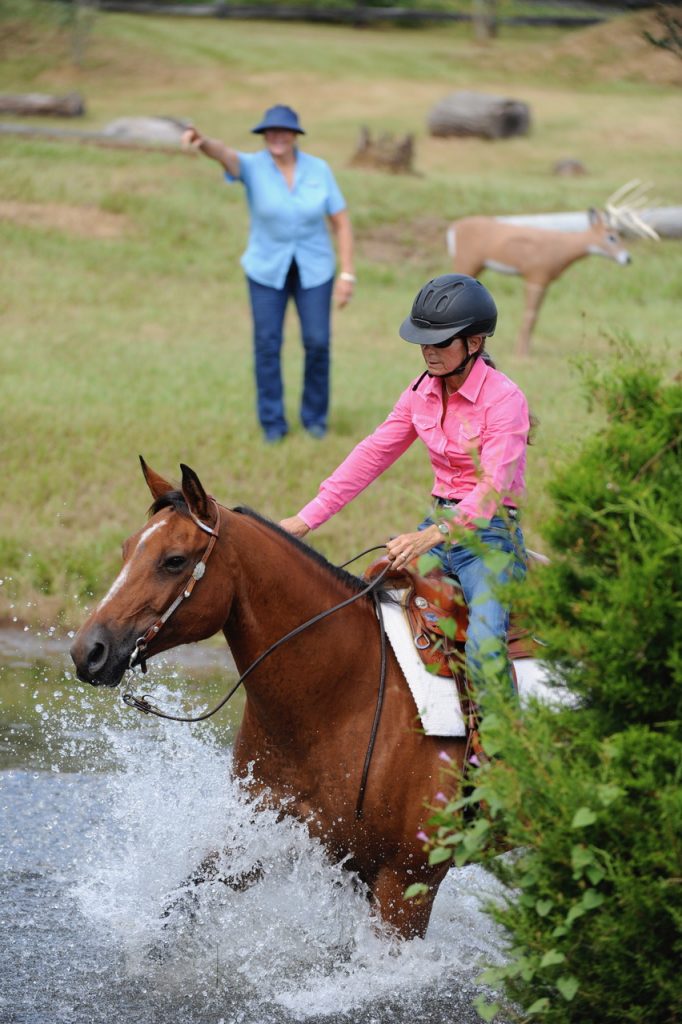
Water is possibly the most difficult natural obstacle for any horse. Why? Because
horses are smart and they want to take care of themselves! When they cannot see the
bottom of the water obstacle, they feel as though they can’t access their safety.
Whenever I see a rider trying to get their horse in water and the horse is resisting,
oftentimes the rider becomes discouraged and they start kicking the horse to go forward.
Anytime you start kicking a horse, they’ll go backward instead of forward. This becomes
frustrating for the horse because he’s insecure about the water and the rider is giving him
the wrong guidance.
To teach your horse confidence with water it’s best to start him on the ground. I
also like using another horse’s presence who is confident with water. This gives
confidence and trust to the horse who is hesitant about water obstacles, whether it’s a
flowing creek or a calm lake.
I use a conventional halter, lunge line and lunge whip and constantly keep the
horse moving away from me. The reason is clear: If the horse doesn’t want to go in the
water, they’re going to walk over the top of you because they are not afraid of you. It’s
also possible that they’ll jump on you because that spot where you are is safe.
I let the horse you’re leading in-hand follow the confident horse. Allow the
confident horse to listen to the water, make splashes, and go in and out of the water
beside my in-hand horse. When you can get one foot wet on the hesitant horse, you’re
going to succeed. Don’t constantly keep the hesitant horse away from you by throwing
your arms and wildly swinging your whip; simply do not allow him to come toward you.
This will teach him to deal with the water on his own. Once he gets his foot wet and starts
to step in, I follow him on horseback and stay parallel to him. I allow the horse to walk in
and walk out of the water, which serves as a reward.
Once my horse is confident about the water obstacle while in-hand, I progress to
approaching the water while under saddle. I still use another horse as a helper so mine
will follow and build assurance and trust. Once I get the horse in the water, I do not let
him stop and paw; I keep him moving forward. The pawing is a good sign, however,
demonstrating that he is building his confidence. But I keep him moving forward. Once I
accomplish this, it’s enough of a lesson for that day.
In the next training lesson, I continue to build confidence by continuing to use
another horse. I will use that other horse as much as possible until I’m assured that my
horse now has confidence with water. When my once-hesitant horse is ready, I still have
my other horse alongside as I go in and out of the water on my own. The final stage is to
fall in behind the other horse, using natural herd instinct to follow another horse.
If a horse has had a bad experience in the past or has gotten scared with water,
take your time and understand that a horse is smart and is simply trying to protect
himself. He doesn’t know what’s under that water. With horses who never get
comfortable with water, I always know they’ve had a bad experience in the past.
If you’re going on a trail where you may encounter water, make sure you have a
halter and lead with you. If you need assistance you can return to basic ground work or
somebody can help you — it’s easier with a halter and lead. Put your halter on over your
bridle and either tie your lead over and around the horse’s neck or on the saddle horn.
There’s nothing more fun than a horse who is confident with water! I love to
swim horses — it’s a blast! What’s even more fun is to ride horses on the beach! Take
your time, invest in ground work, and make sure you have a good helper along with a
confident horse. These are the keys to succeeding and building water confidence with
your own horse.
I also have a DVD series, “Training on the Trail.” These give you successful
training lessons for any natural obstacle you may encounter on a trail or competition.
- Palm Equestrian Academy generalinfo@lynnpalm.com 352-362-7847
- Cyril and Lynn offer clinics throughout the country and abroad as well as
online coaching. Join them on their teaching tours or their Palm Equestrian Academy
European Journeys.

